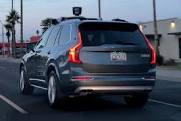Older adults can save tens of thousands of dollars annually by choosing assisted living communities over aging in place in their homes.
Unlike point solutions, Inspiren unifies resident safety, care planning, staffing, and emergency response into a single AI-powered platform.
An artificial intelligence-powered virtual assistant platform for senior living and care providers.

 The 2018 Boomer Business Summit, now in its 15th year, built this year’s conference as the ‘Blueprint for the Longevity Economy’. That blueprint depends on the enthusiasm and foresight of innovators and leaders of technology companies that focus on the boomer-senior market, increasingly offering
The 2018 Boomer Business Summit, now in its 15th year, built this year’s conference as the ‘Blueprint for the Longevity Economy’. That blueprint depends on the enthusiasm and foresight of innovators and leaders of technology companies that focus on the boomer-senior market, increasingly offering  In a taxi in DC – the driver wends his way around buses and pedestrians. It’s the day after the
In a taxi in DC – the driver wends his way around buses and pedestrians. It’s the day after the  Surveys affirm increasing tech use among older adults, but for some, not so fast. Whether it is new data from
Surveys affirm increasing tech use among older adults, but for some, not so fast. Whether it is new data from  Technology and tech-enabled services matter for older adults. The marketplace for technology to assist aging adults in the Longevity Economy is expected to grow to more than $30 billion in the next few years, according to the
Technology and tech-enabled services matter for older adults. The marketplace for technology to assist aging adults in the Longevity Economy is expected to grow to more than $30 billion in the next few years, according to the